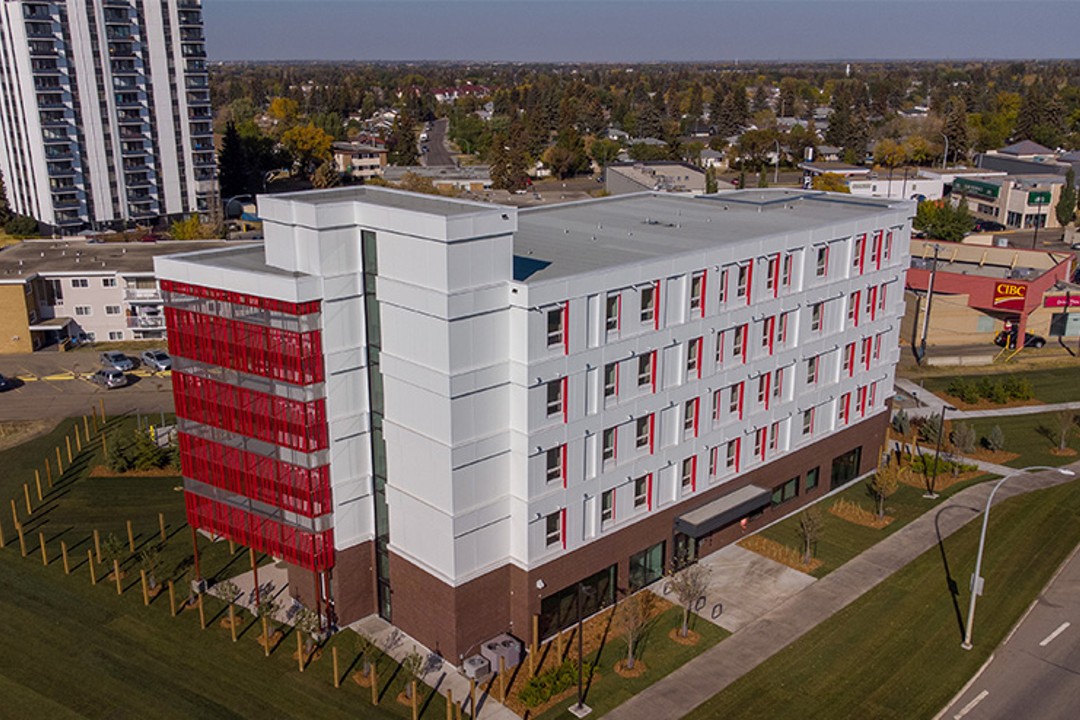As Edmonton enters an election period while nearly 4,700 residents are homeless, Taproot spoke to experts with Community Housing Canada and the Collins Lab for Urban Excellence at the University of Alberta to learn more about Edmonton's supply of non-market housing.
Damian Collins, professor of human geography at the university, told Taproot the federal government started to withdraw financial support for the construction of public housing at the end of the Brian Mulroney government in the early 1990s and the beginning of the Jean Chrétien government that followed — and subsequent governments followed suit.
"It's the origins of Canada's housing crisis," Collins said.
The City of Edmonton recently said there are fewer than 17,000 units of housing across Edmonton that the poorest residents can afford, and that 46,000 households are living somewhere they can't afford, is crowded, or is unsafe.
Experts suggested the overall supply of housing built with either partial or full subsidies from public governments has played a role in the housing pressures many people in cities, including Edmonton, are now experiencing.
That supply of public housing traces its roots back to 1946, when the federal government created the Central (now Canadian) Mortgage and Housing Corporation to offer a new 25-year, low-interest mortgage to veterans returning to Canada after the Second World War. At the same time, the CMHC administered the National Housing Act, which provided subsidized housing to households that could not afford to pay market prices. Some reports estimate Ottawa helped fund 5,356 units of social housing each year between 1985 and 1989. If the federal government had continued funding housing at this rate between 1994 and 2013, more than 107,000 subsidized housing units could have been built. In January 1994, however, the government froze the CMHC budget at $2 billion, and it stopped funding new social housing. The current federal Liberal government announced Canada's Housing Plan in April, which calls for non-market housing to be built on every possible piece of public land. The plan includes $1 billion to build non-market housing and $1.5 billion to protect and expand non-market housing.
Katie MacDonald, a co-investigator on the Community Housing Canada project and an assistant professor at Athabasca University, said the historic cuts meant not only that no new social housing was being built, but that existing housing fell into disrepair.
"It's not like the non-investment was a hold," she said. "It's not like, 'Okay, we're in the same situation we were decades ago, you can step right in.' No — buildings have deteriorated."
At the same time that the federal government stopped subsidizing housing, purpose-built rental construction declined in Edmonton, further constricting the housing supply for all income levels.
Public housing is still being built in Edmonton, but it's going up in different ways across the city.

wâpanAcâhcahk - Morningstar Home is a 47-unit supportive housing building in Terrace Heights. Each resident has a case worker and there are addiction and mental health therapists, social workers, occupational therapists, and nurses on site. (City of Edmonton)
The City of Edmonton helps create non-market housing by selling City-owned land to developers and social services. Just one recent example is city council approving the sale of a plot of land in the Quarters to e4c for $1,000. The non-profit plans to build 19 single-occupancy units for people transitioning out of homelessness there.
The City also builds supportive housing, at times with funds from the federal government's Rapid Housing Initiative. Supportive housing is a type of housing for very-low-income households where they can receive financial help, support with life skills, and health and wellness services. When the buildings are complete, they are transferred to Homeward Trust. The City is currently constructing supportive housing developments in Holyrood, Garneau, and Canora. In October and November, city council made the final zoning changes that would allow parts of 11 surplus school sites to be turned into affordable housing projects. The first tenants are expected to move in by 2028. The City said it has invested $254 million in non-market housing since 2019 to help create more than 5,500 units, including 916 units of supportive housing. Across the city, there are currently fewer than 17,000 units of housing those who make the very least can access.
Is there enough subsidized housing?
Despite these efforts, there is still not enough subsidized housing in Edmonton for everyone who needs it. The future need is growing, too. The City's Affordable Housing Strategy, which was updated in 2023, said that by 2050, Edmonton will need nearly 40,000 additional units of subsidized housing: 3,800 new units with rent geared to income for very low-income households; 30,200 deep and shallow subsidy units for low- and moderate-income households; and 5,700 near-market units for average-income households.
The need for subsidized housing is concentrated among racialized people, Indigenous people, single mothers, and seniors. In 2021, one in eight households in Edmonton were living in core housing need. This means the housing either cost more than 30% of the household's pre-tax income, didn't have enough bedrooms for the number of occupants, or was in disrepair. The affordable housing strategy said that number is likely even higher because incomes were artificially inflated in 2021 due to Canada Emergency Response Benefit (CERB) payments. The City's affordable housing dashboard has an interactive map showing housing costs and non-market housing supply across the city. The dashboard suggests a minimum wage worker would need to work nearly 60 hours a week to have adequate means to rent a one-bedroom apartment in Edmonton.
The City strategy said that providing subsidized housing for the more than 46,000 households in core housing need requires a $15.4-billion investment from all levels of government. In the short term, the City said it needs 2,700 new and renewed units of affordable housing by 2026.
While talk focuses on building, Edmonton is currently losing both publicly funded housing and naturally occurring inexpensive housing. For example, the federal government is tearing down non-market housing in Griesbach, though it plans to build 1,250 non-market units in the neighbourhood's redevelopment.
MacDonald said the provincial government's fraught relationship with the federal government could make it hard for Edmonton to build non-market housing. The Provincial Priorities Act, which received Royal Assent in May, would require cities to gain provincial permission before entering into agreements with Ottawa. The legislation is anticipated to come into effect in early 2025. "A lot of folks I know thinking about building non-market housing are worried about what (the Provincial Priorities Act) will mean for them to get grants from the federal government," MacDonald said. "It's a really hard context for the City to be addressing housing when the levers that are open to them are so few."
What can be done to increase and improve subsidized housing?
Building enough subsidized housing requires governments to work together, and to collaborate with private housing developers, MacDonald said.
"I think in the context of the city, (we need to) really think about what kind of partnerships we need to increase supply of the non-market sector and shift how we think about non-market sector," MacDonald said.
Subsidized housing is stigmatized and viewed as a temporary home, MacDonald said. But for some, market housing will be inaccessible for their entire lives. "Part of what we need to do is challenge the assumption that living in community housing is both bad and temporary."
MacDonald said funding agreements that build subsidized housing sometimes have a clause that allows the developer to "buy themselves out" of providing units at prices below market. She said one way to ensure non-market housing supply remains is to require units built with a subsidy to remain non-market in perpetuity.
The people who will eventually live in the subsidized housing also need to have a say in the process, MacDonald said.
"Developers obviously have expertise in the permitting process, building architects are needed, but population-serving organizations understand what's really important to folks who are going to live there, and that's important from the beginning to the end of a project, not just at the end of the project," she said.
Snapshots from Edmonton's housing ecosystem
Several people within Edmonton's housing ecosystem are affected by the state of public housing:
- Cecilia Romero: 'What if I had given up on them?'
- Omar Yaqub: 'Why is the policy this way?'
- Bernice Westfall: 'Now I'm one of the ones needing help'
- Bruce Bremner: 'I had a rough, rough go there'

